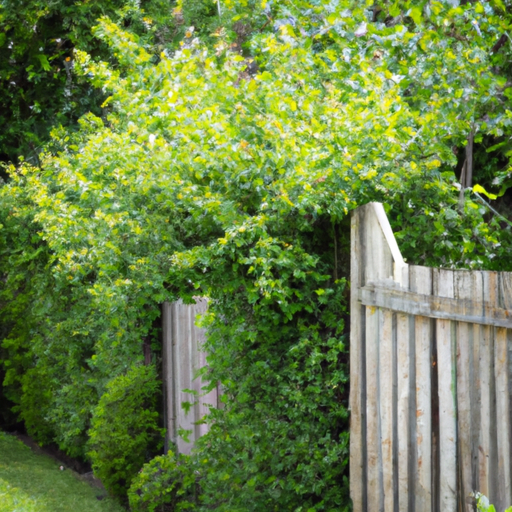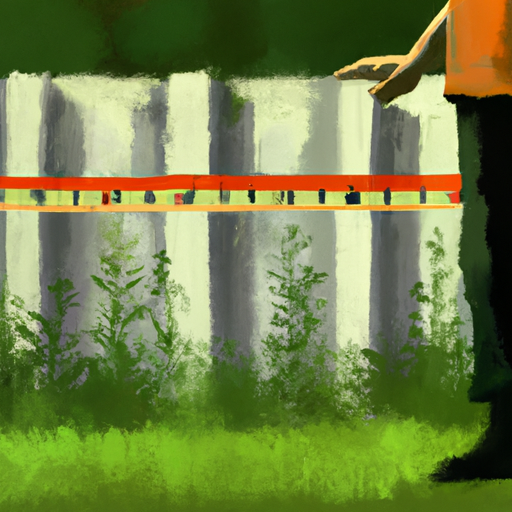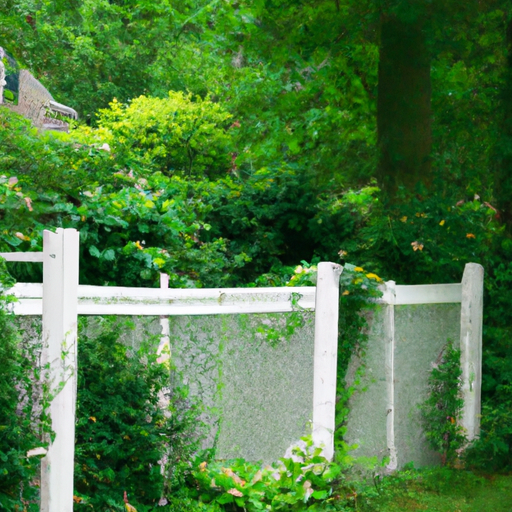This text provides advice on the selection, planning, construction, design and maintenance of fencing. It covers material options, exact measurements, local regulations, strength and safety, design ideas for improved privacy, and maintenance tips.
Having a private and secure yard is a top priority for many homeowners. One effective way to achieve this is by building a privacy fence. A well-constructed fence not only adds a sense of security, but also enhances the aesthetic appeal of your outdoor space. However, building a privacy fence can be a daunting task if you don’t have the right knowledge and guidance. In this article, we will provide you with basic tips and techniques for building a privacy fence that will not only meet your needs, but also stand the test of time. From choosing the right materials to enhancing privacy with creative design ideas, we’ve got you covered. So let’s dive right in and discover the secrets to building a privacy fence that will turn your yard into a private oasis.
- 1. “Choosing the right materials for your private fence”
- 2. “Planning and Measuring: Important Steps to Successful Fencing”
- 3. “Construction methods and tips for a strong and reliable privacy fence”
- 4. “Increasing Privacy: Creative Design Ideas for Your Fence”
- 5. “Maintenance and Durability: Make sure your privacy fence stands the test of time”
1. “Choosing the right materials for your private fence”

Choosing the right materials for your fence is important to ensure its durability, functionality and aesthetic appeal. Here are some tips to help you make an informed decision.
1. Wood: Wood is a popular choice for privacy fences due to its natural beauty and affordability. Cedar and redwood are highly recommended because they are naturally resistant to rot and decay. However, they require regular maintenance such as painting or staining to protect them from the elements.
2. Vinyl: Vinyl fences are low maintenance and very durable. They are resistant to rotting, insects and harsh weather conditions. Vinyl fences are available in a wide range of styles and colors to match the look of your home. Although they may be more expensive up front, they save you money in the long run because they require almost no maintenance.
3. Metal: Metal fences, such as aluminum or wrought iron, offer a more modern look and offer superior security and durability. They require minimal maintenance and withstand harsh weather conditions
2. “Planning and Measuring: Important Steps to Successful Fencing”

When it comes to building a privacy fence, proper planning and accurate measurements are critical to a successful installation. Before you start digging holes and buying materials, take the time to carefully plan your fencing project.
Start by defining the purpose of your privacy fence. Looking to create a secluded outdoor space, block out noise, or increase the security of your property? Understanding your specific needs will help you determine the height, style and materials needed for your fence.
Next, survey your property and determine the boundaries. It is important to make sure that your fence is installed within your property and does not encroach on your neighbor’s land. Check your local building codes and regulations to avoid any legal problems or disputes.
Once you are clear about your goals and boundaries, measure the area where you plan to install the fence. Use a tape measure to determine the length of the perimeter and mark any obstructions such as trees, rocks or slopes that may interfere with the fence.
3. “Construction methods and tips for a strong and reliable privacy fence”

When it comes to building a privacy fence, one of the most important aspects to consider is its strength and security. After all, the primary purpose of a privacy fence is to create a barrier that keeps out unwanted intruders and ensures the safety and privacy of your property. To achieve this, here are some important construction techniques and tips to keep in mind:
1. Plan and measure accurately: Before you start building your fence, it is important to carefully plan and measure the area where the fence will be installed. Take accurate measurements of the perimeter and mark the exact locations where the fence posts will be placed. This will help you determine the amount of materials needed and ensure that your fence is positioned correctly.
2. Choose the right materials. Choosing the right materials is vital to building a strong and safe fence. Choose high-quality materials that are durable and weather-resistant, such as pressure-treated wood or vinyl. These materials withstand weather conditions and require minimal maintenance,
4. “Increasing Privacy: Creative Design Ideas for Your Fence”

When it comes to building a privacy fence, there are many design ideas that can enhance both the functionality and aesthetic appeal of your fence. By incorporating creative elements into your fence design, you can create a private and visually pleasing outdoor space. Here are some tips to help you increase the privacy of your fence with creative design ideas.
1. Height and strength: One of the easiest ways to ensure privacy is to choose a high and strong fence. Choose a fence that is at least six feet tall to keep prying eyes out of your yard. Hard materials such as vinyl or wood paneling will further obstruct the view, making it difficult to view.
2. Planting greenery: Another effective way to increase privacy is to add greenery to your fence design. Consider planting tall shrubs or climbing plants along the fence line. Options such as thuja, bamboo or evergreen hedges can create a natural barrier that adds beauty and privacy
5. “Maintenance and Durability: Make sure your privacy fence stands the test of time”

When building a private fence, it is important to consider its care and durability to ensure that it will stand the test of time. Here are some tips to help you maintain and extend the life of your fence.
1. Choose the right materials. Choose high-quality materials that are durable and weather-resistant. Vinyl, aluminum, and cedar are popular options known for their durability. These materials are not only durable, but also require minimal maintenance, saving you time and effort in the long run.
2. Proper installation: Make sure your fence is installed correctly by hiring professionals or following detailed installation instructions. Improper installation can lead to weak points or instability, which will reduce the durability of the fence. Aligning the posts correctly, installing them at the correct depth and using quality fasteners are critical to the longevity of the fence.
3. Regular Cleaning: Clean your privacy fence regularly to remove dirt, debris and mold. Use a garden hose or pressure washer to rinse the surface and scrub away any stubborn stains
In summary, building a fence requires careful consideration and planning. By choosing the right materials, taking accurate measurements, using efficient construction methods, and incorporating creative design ideas, you can create a strong and secure fence that enhances your privacy. In addition, regular maintenance and proper care will ensure that your fence will stand the test of time. With these tips in mind, you can confidently begin your privacy fence project and enjoy the peace and privacy it will bring to your outdoor space.
 Purex find
Purex find